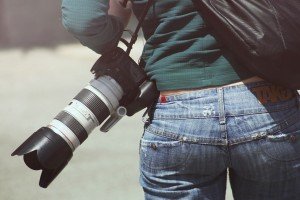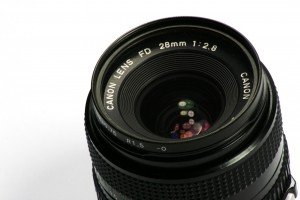The 7 Lessons to Shoot Professional Photos on the Side
Starting a photography business is a great way to starting working from home, set your own hours, and earn side income with minimum startup costs.

Indeed, the relative high value of even semi-professional quality photos to individuals or businesses in multiple niches make photography a lucrative side job.
And the best part is that the learning curve to creating technically proficient to great images is relatively small, especially compared to what public opinion makes it out to be.
In many cases, you may even have the gear you need to immediately get started this afternoon.
Freelance Photography Fields: Money to Be Made
First of all, you really don’t need to be a professional photographer to venture into a small scale business working from home. You can become a professional photographer and make money shooting images at events, parties or even weddings.
Event Photography
Event photography is the easiest field of photography in which to get started and make a quick side income.
Learning great event photography is as simple as simply assisting events yourself, bringing your camera and creating images. Pick out a few parties you plan on assisting anyway and commit to bringing your camera and capturing images of your friends.
Come to the events with a documentary mindset, and be sure to take the time to think about creating images of details like decorations.
Then, while there, spend time interacting and meeting with guests. After a fair bit of conversation, they will feel much more comfortable when you ask them to take a photo. This interaction is crucial to creating a trust in your subject that will lead to natural, bright and interesting images, as opposed to posed or average photos.
The process of clicking the shutter and translating that moment into a photograph is relatively much easier.
After you have a handful of quality images to use as a portfolio, you can begin to pitch your services working from home. And as you become better at producing images, you can also expand into other fields such as portrait photography, product photography or even real estate photography.
Insider tip: Shy away from using flash, even in dim lighting conditions. Built in flashes almost always create horrendously unflattering images of people. If you know you will be working in dimly lit areas, like nightclubs, an external flash is a great investment.
Wedding Photography
Yes, weddings are events and all of the same skills mentioned above also apply to wedding photography. However, wedding photography is deserving of its own separate mention for two reasons: wedding photography carries a lot more responsibility of the photographer, and wedding photography pays much, much more than other kinds of event photography. In fact, most wedding photographers charge upwards of $1000 for their services.

Wedding photographers typically also take engagement photo sessions before the event. This is a way to get to know the couple and can be helpful as a dress rehearsal to take photos that may be harder to capture in the chaos of a wedding. This also gives you added time to capture detail shots.
Don’t forget that everyone at a wedding is a potential client. Even getting to know the owners of the venue and the caterers is a great step to securing future business.
But absolutely do not forget that weddings are extremely important events in one’s life, and there is a lot of responsibility to not let the moment pass without creating good images. Weddings should not be your first foray into professional photography.
Other Areas
Real Estate photography is a very lucrative field, albeit difficult. However, it is very easy to find potential clients. Look for online adverts of homes and apartments for sale or rent, and take a look at their images. If you can do a better job, then they’re a potential customer!
Food photography is another difficult field to master, but has tons of opportunity. Again, check out a restaurant’s website and images of their food. If you can make better images, let them know!
And finally, product photography can be very useful for people trying to sell their things online. You can setup a small lightbox and get great shots of anything small. Ask friends if you can snap some images of belongings they may not want anymore and may be interested in selling.
Understanding Photography
The art of creating a great image is a pursuit that will take a lifetime. However, creating a technically proficient photograph is not terribly difficult. A few resources that can help with picking up the essentials that will make you able to create professional quality images in 95% of all cases are below. Practice using these tutorials, and your images can be up to par in as soon as a week.
Day One: Camera Exposure
Day Two: Understanding Perspective
Day Three: Depth of Field
Day Four: Basics of Composition and Technique
Day Five: Lighting 101
Day Six: Getting Started with Adobe Photoshop Lightroom 5
Day Seven: Miscellaneous Lessons
Easy Professional Photography Tips to Immediately Eliminate Any Amateur Qualities From Your Images:
Always consider your background
Many amateur images will have convoluted, cluttered backgrounds that distract from the main subject. Even worse, amateur portraits will have poles, palm trees or other items protruding from behind their subject’s heads. Even just slightly adjusting your position or that of your subject can solve this issue. As such, it’s inexcusable for a professional photographer.
Consider Perspective
Zooming in and zooming out changes much more than just how many people you can fit into an image, it also changes the perspective of the photo. Remember that perspective significantly alters how flattering a subject appears in your final image. So to immediately improve your portraits, take a few steps back, and zoom in.
Consider Light and Shadows
Again, amateur portraits are raw with uneven light and shadows on faces, qualities that are not present in professional photos. Always position your subjects so that there are no shadows on their face, and consider how contrast will affect your final image.
Plan Your Shots Beforehand, Put the Work In
The best shots come to those who wait. For instance, natural sunlight is “golden” and most flattering in the first hour of the day, and the last hour of the day. If you really want a landscape photo that shines, wait until that time to get your photo, it’ll be worth it.
Minimize Post Editing
Photoshop was created for graphic designers, not photographers. As covered in the lessons, you should always get your images right on set, and leave post editing to a minimum. Even then, limit the majority of your editing to cropping and small color corrections.
Photography Gear, Your Initial Investments
Startup Costs for a photography business are not at all prohibitive, and should only be a few hundred dollars at most. In many cases, a camera you already have is sufficient. If you have a little more budget to play with you could also invest in a small video camera to be able to offer photography and videography services. Here is a list of everything you will need:

A DSLR Camera with kit lens ($400)
High competition and very rapid advancement of models mean that competent digital cameras can be had for very little. We recommend that you do not spend more than $400 on your first DSLR camera, by either purchasing a used camera or purchasing last year’s model. Either way, you’ll easily have a camera more than capable of creating great images.
Yongnuo YN560 External Flash ($71)
Though not essential, an external flash comes highly recommended to having a high quality of control over the light and exposure of your image. External flashes are very useful for events in dimly lit areas, like nightclubs. For niches like real estate photography, it is essential.
An Extra Lens ($200-$400)
Purchasing a niche-specific lens has a much higher impact on your raw image quality than purchasing a great camera. If you are interested in portrait photography, pickup a prime lens with a focal length of around 85mm. If you are interested in real estate photography, pickup a zoom lens with a focal length range from around 15-20mm at widest to 30mm at narrowest.
Getting Your Voice Heard and Your Images Seen
Though many professional photographers have their own websites, they are not essential to get started. Use a service like Flickr at first to at the very least assure that your images can be referred to and seen by anyone on the web.
Social Media is also a great place to display your images, as many social networks are image-centric and give a algorithmic boost to large images.
We also recommend that you invest in business cards to hand-out to anyone you may meet at events, or who may be interested in your services.
Though photography can seem intimidating and daunting from afar, it’s not terribly difficult to get started working from home and earning a valuable side income. We hope that this guide makes learning and understanding photography much more accesible to the average Aussie.




